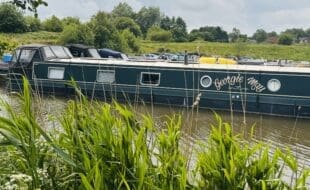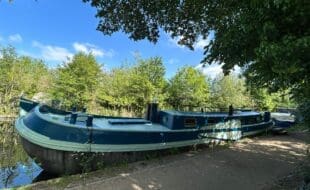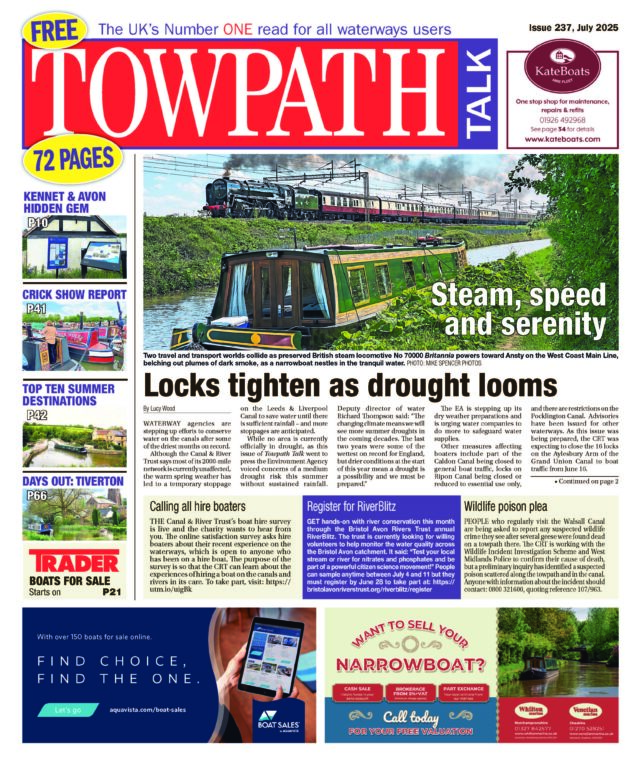THE Canal & River Trust’s lock gate workshops, at Bradley in the West Midlands and Stanley Ferry in Yorkshire, are bringing forward several small changes to lock gate production to increase speed and efficiency.
With more than 1500 locks across the trust’s canal network, and a working life of typically 25 years, there is a constant cycle of production and replacement of old lock gates. This year the trust’s specialist team is producing 123 separate lock gate leaves for installation across the network.

The small changes to production will save the team 25 working days each year, enough time to produce at least an additional two top end single lock gates or one set of bottom end mitre gates.
CRT workshops manager Simon Turner said: “Anyone who knows the canals will understand the enduring appeal – and vital function – of the traditional lock gate. While our specialist workshops still build these lock gates in-house, it’s more important than ever that we find ways to do this more efficiently. Our historic canals are facing significant challenges from floods and droughts, driven by a changing climate, and from a cut in future funding from government.”
A working group including workshop carpenters, heritage specialists, engineers and volunteer boaters on the trust’s Navigation Advisory Group has brought forward the changes.
First designed 250 years ago, the traditional black and white lock gate is an iconic feature of the nation’s landscape, and it is important to preserve this heritage aspect.
One change agreed by the group is to only paint lock gate steelwork that is above the waterline. As the painting is purely decorative, this will retain the characteristic look while having no impact on the resilience of the gate.
While each lock gate is unique in terms of its precise measurements, different waterways or lengths of waterway have unique gate designs. Establishing a design template for different canals or lengths means the workshops don’t have to reproduce any 20th century, non-heritage or functional anomalies which may currently exist on each canal. Standardised designs are now in place for the Shropshire Union Canal, Birmingham Canal Navigations and Worcester & Birmingham Canal, with work ongoing for the Oxford, Stratford and Montgomery canals.
Further location-specific changes, in some instances requiring consent from local authorities, will see an alteration to the design of the bottom end gates on the Grand Union Canal which will negate the need for a second horizontal layer of planking without compromising the performance of the gate.
The group has looked at ways the trust can save money on materials. In conjunction with engineers from the Timber Research & Development Association it has refined the Lock Gate Calculation sheets. These calculate the size of timber required to achieve the required strength of the lock gate. The new sheet allows the teams to try different timber sizes and is likely to produce a saving of 5% on timber usage.
Simon added: “The proposals for alterations to the designs and production process were brought forward by the teams who carry out the work, with valuable ideas and feedback shared by boaters on our Navigation Advisory Group. Any new ideas must respect the important heritage of the canals, while balancing the needs we have, as a charity, to safeguard the future of the ageing network.”
#canalandrivertrust #towpathtalk #canals #canalsandrivers #narrowboat #rivers #waterways #lifeonthecut #boating #boats #canallife #canallifeuk





